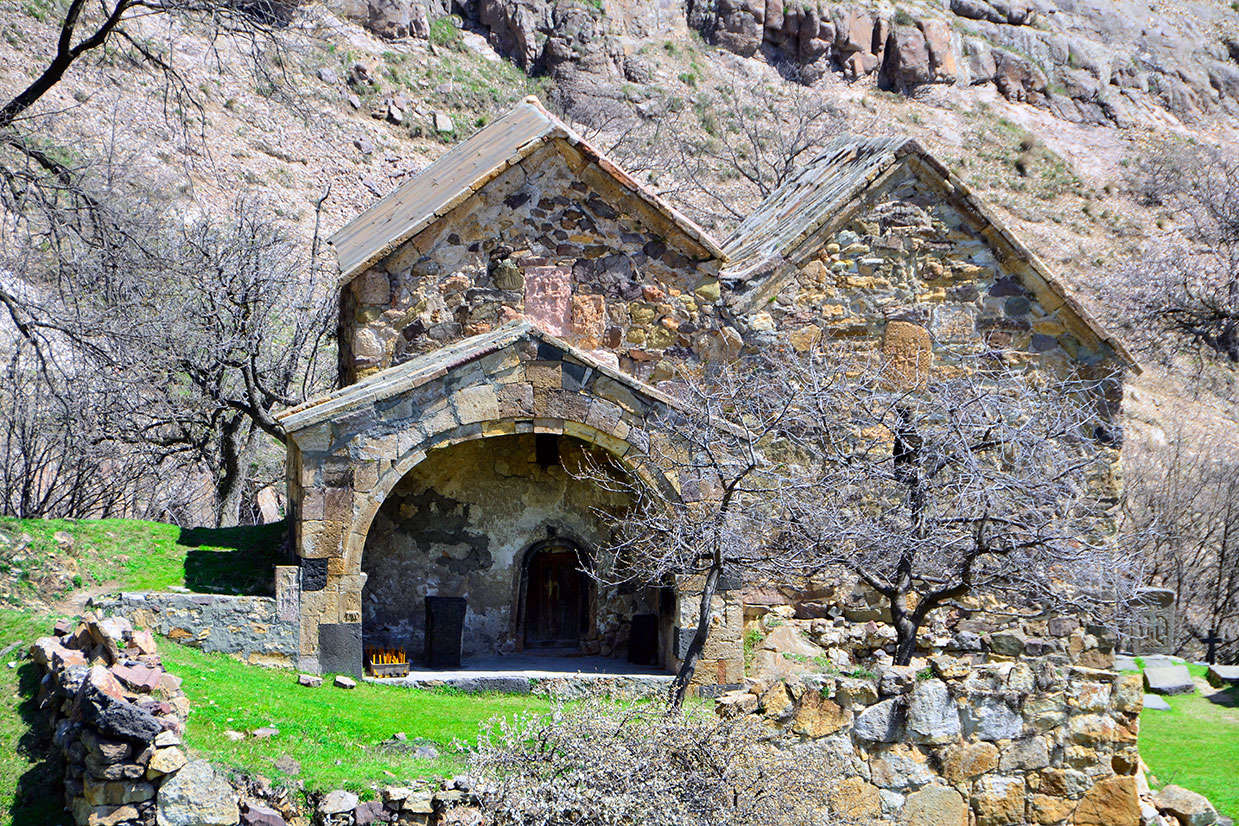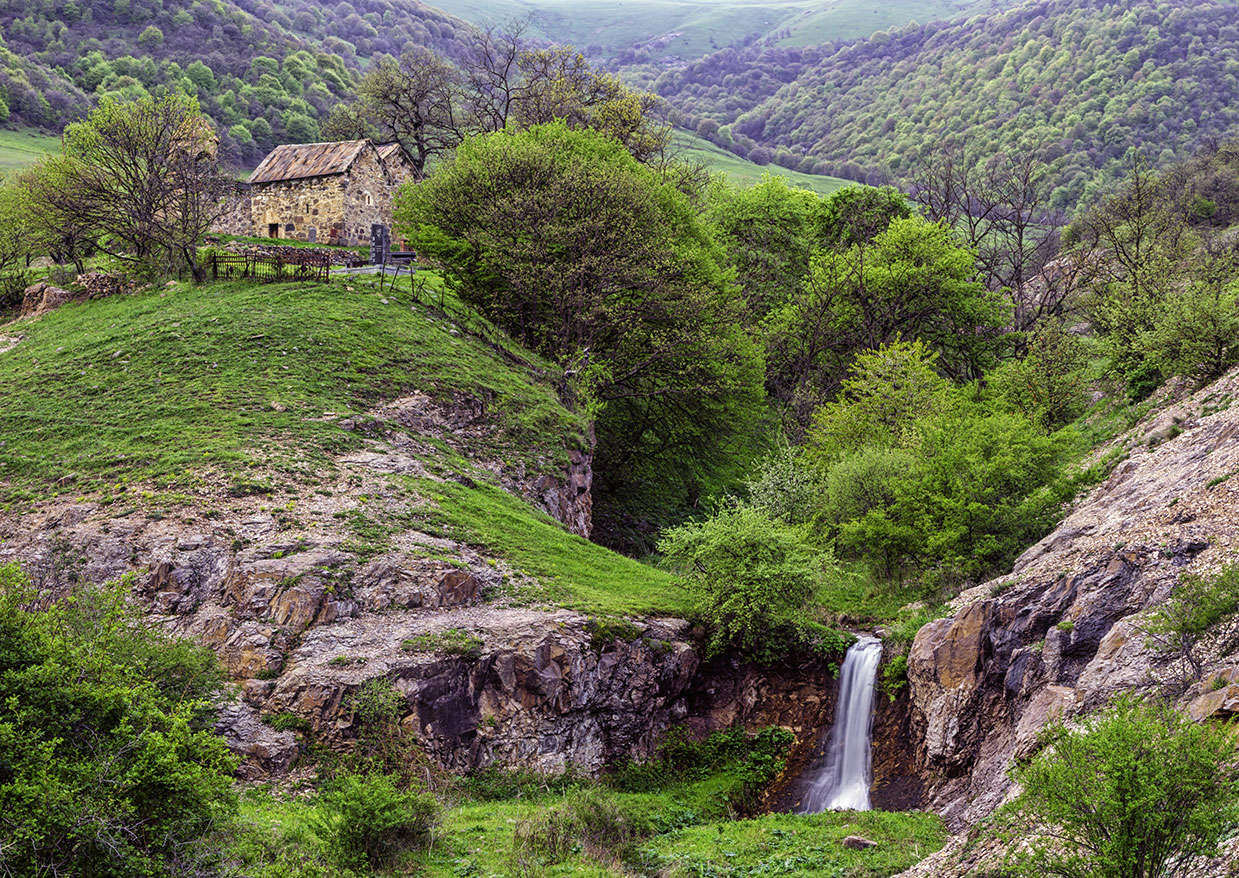Ardvi
Ardvi is a village in one of the most beautiful regions of Armenia, Lori. It is located in the northeast of Armenia and borders upon Georgia. This province is famous for its mild climate, as the Lori-Pambak Range stretches in the way of cold winds from the north. Many rivers flow across this picturesque region, including Pambak, Dzoraget, Debet, and Aghstev. Lori is rich in lakes and mineral springs. Evergreen trees and shrubs grow in the valleys of the rivers. Lori is the land of ridges, steps, and deep ravines. Here, one may find Pushkin pass, where,in 1828. On his way to Erzrum, Pushkin witnessed how the body of Alexander Griboyedov was being transported to Tbilisi. The history of this region is very enchanting, as it has left a rich cultural heritage for centuries. Here, in the 10th-11th centuries, the independent Armenian state Lori Kingdom was formed. Part of the region was the heritage of the Zakaryan dynasty. The monasteries Haghpat and Sanahin that date back to the 10th century, have the characteristics of Byzantine architecture. These ancient treasures belong to the UNESCO World Heritage Site. The province was severely damaged during the earthquake in 1988.
Like all villages in Lori, Ardvi is also surrounded by forests and colourful flower fields. Here, one may find small houses, decorated with tiles. The village was formerly called Melikagyugh or Melikaqyand. The majority of ancestors in Ardvi have moved from Kars and other parts of western Armenia. The locals are mostly engaged in agriculture, livestock farming, and horticulture. This region has a huge tourism potential, which is connected with the historical and cultural monuments in the villages and the stunning nature.
The monastery complex of St. Hovhannes or Srbanes (8th - 17th c.), also known as Hovhan Odznetsi, is located in Ardvi. The complex consists of two churches and a bell tower. The ancient structure is surrounded by Khachkars (stone crosses), an old temple and the ruins of various buildings. Here, the Armenian 34th Catholicos Hovhannes Odznetsi (717 - 728) is buried, who was an outstanding theologian, jurist, author of numerous theological works (including the Book of Rules, the first collection of laws of the Armenian church) and religious songs. Every year, on April 17, the Armenian Apostolic Church organizes a pilgrimage to Ardvi, the birthplace of Hovhannes Odznetsi, to commemorate his memory and visit the monastery of St. Hovhannes, where the relics of the famous philosopher can be uncovered. Not far from the church the spring water, named Odzi Port (“snake’s navel”)is located, which is believed to deliver water with healing powers. Almost everyone who lives in Ardvi can tell you the ancient legend. Once, Odznetsi heard the voice of a woman, who was crying for help, as the huge snake had attacked her. Saint Hovhannes sent his pupils to help her, but none of them returned. Afterwards, he determined to go to the village himself. Odznetsi hit the snake with his cane and said: “Let a healing water flow out from your navel. As for you, let your body turn into stone”. The water running out of the Snake Navel contains gold and silver, which was confirmed by Yerevan Geology Institute. Those who once drink water from “Snake’s Navel“ are tempted forever and return to this place again. Ardvi was a shooting place for the movie “The Color of Pomegranate’’, written and directed by the prominent Armenian director Sergei Parajanov.
This village, surrounded by mountains, is completely covered with grass. It always appeals to people and makes them return, due to its magnetic attraction. Beautiful memories and impressions for the tourists are guaranteed here. You will enjoy a nice time with locals here.









